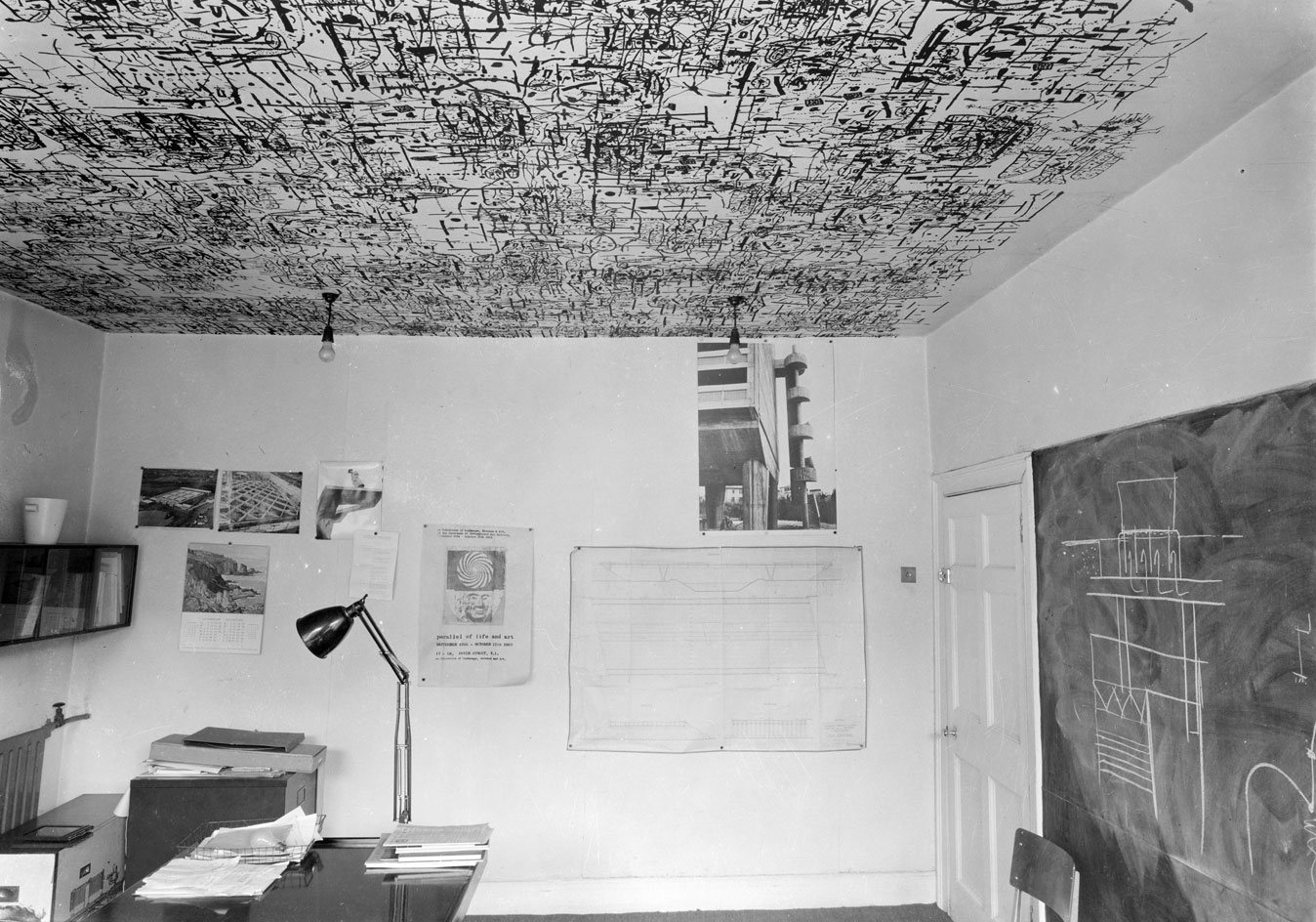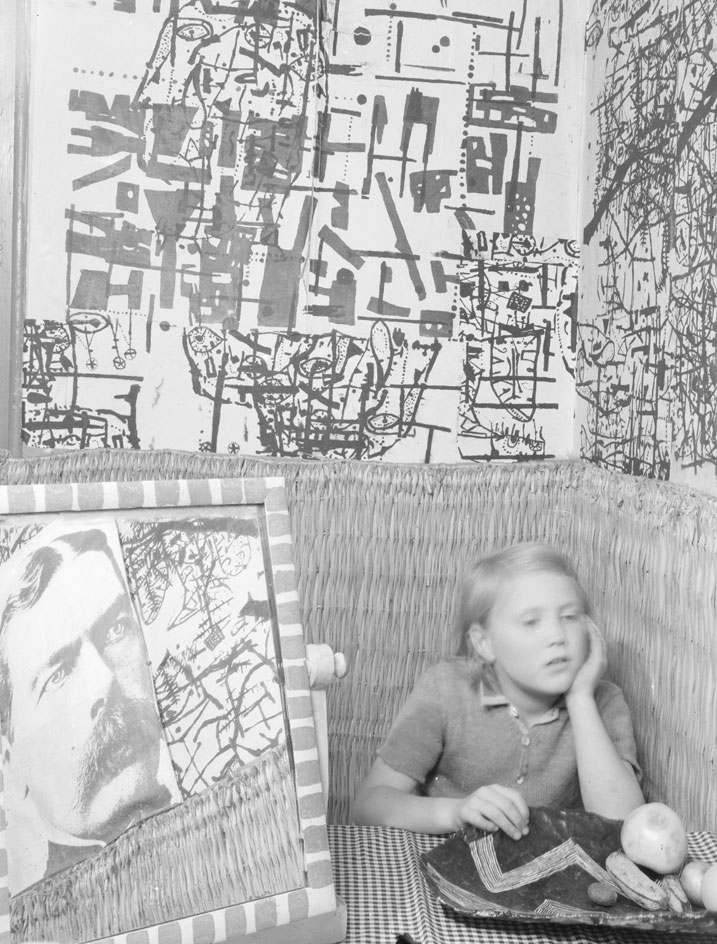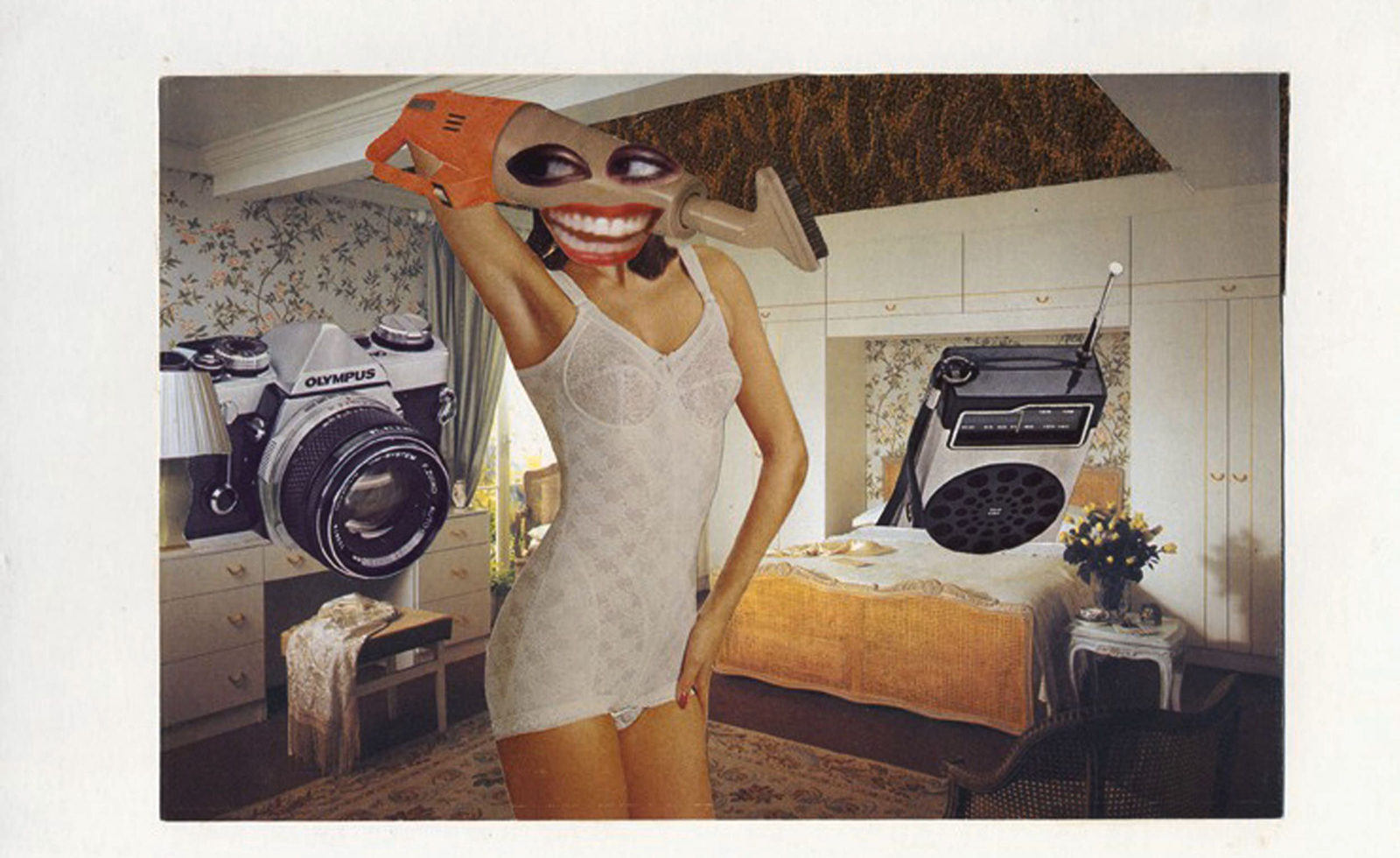Tate Britain celebrates the short but seismic age of New Brutalism

Designed in 1949 by Alison and Peter Smithson and opened in 1954, Hunstanton Secondary Modern School was a radical series of Miesian boxes landed in Norfolk; and a key building in the development of British modernism.
The team behind its construction, and the documentation of its construction, included not just the Smithsons but the sculptor Eduardo Paolozzi, who created a large collage for the school; the artist-photographer Nigel Henderson; as well as the pioneering structural engineer Ronald Jenkins of Ove Arup & Partners. The group fused, found common creative cause and continued to collaborate.
The Smithsons designed Jenkins’ office at Arup which featured a Paolozzi collage on the ceiling, a project which saw them become a cross-disciplinary collective dedicated to exploring the problems and potentials of mass media and other manifestations of modernity. The critic Reyner Banham would tag that broader project 'New Brutalism' in 1955.
In the meantime the team, now the nucleus of what was the Independent Group, also helped create the hugely influential ‘Parallel of Life and Art’ exhibition at the ICA in 1953. Tate Britain’s ‘New Brutalist Image 1949-1955’ exhibition, celebrates this short but seismic collaborative blast with previously unseen pictures by Henderson as well as plans and drawings by the Smithsons.

The staircase at Hunstanton Secondary Modern School. © Tate

Structural engineer Ronald Jenkins’ office at Arup featured a Paolozzi collage on the ceiling. Photography: Nigel Henderson. © Tate

'Collage Mural', by Eduardo Paolozzi, 1952. © The Eduardo Paolozzi Foundation

‘Plaster Blocks', by Eduardo Paolozzi, 1952. Photography: Nigel Henderson. © Tate

The interior of Henderson’s house in Bow, London. Photography: Nigel Henderson. © Tate

A portrait of Henderson's daughter in the family's front room, also decorated with designs by Paolozzi. Photography: Nigel Henderson. © Tate
ADDRESS
Tate Britain
Millbank
London SW1P 4RG
Wallpaper* Newsletter
Receive our daily digest of inspiration, escapism and design stories from around the world direct to your inbox.
-
 The Sialia 45 cruiser is a welcome addition to the new generation of electric boats
The Sialia 45 cruiser is a welcome addition to the new generation of electric boatsPolish shipbuilder Sialia Yachts has launched the Sialia 45, a 14m all-electric cruiser for silent running
By Jonathan Bell
-
 Tokyo design studio We+ transforms microalgae into colours
Tokyo design studio We+ transforms microalgae into coloursCould microalgae be the sustainable pigment of the future? A Japanese research project investigates
By Danielle Demetriou
-
 What to see at London Craft Week 2025
What to see at London Craft Week 2025With London Craft Week just around the corner, Wallpaper* rounds up the must-see moments from this year’s programme
By Francesca Perry
-
 From activism and capitalism to club culture and subculture, a new exhibition offers a snapshot of 1980s Britain
From activism and capitalism to club culture and subculture, a new exhibition offers a snapshot of 1980s BritainThe turbulence of a colourful decade, as seen through the lens of a diverse community of photographers, collectives and publications, is on show at Tate Britain until May 2025
By Anne Soward
-
 Brutalism in film: the beautiful house that forms the backdrop to The Room Next Door
Brutalism in film: the beautiful house that forms the backdrop to The Room Next DoorThe Room Next Door's production designer discusses mood-boarding and scene-setting for a moving film about friendship, fragility and the final curtain
By Anne Soward
-
 Jasleen Kaur wins the Turner Prize 2024
Jasleen Kaur wins the Turner Prize 2024Jasleen Kaur has won the Turner Prize 2024, recognised for her work which reflects upon everyday objects
By Hannah Silver
-
 'You survive with grace': Alvaro Barrington at the Tate Britain
'You survive with grace': Alvaro Barrington at the Tate BritainAlvaro Barrington considers Black culture with Grace installed in Tate Britain’s Duveen Galleries
By Amah-Rose Abrams
-
 ‘Women in Revolt!’ at Tate Britain is a deliciously angry tour de force of feminist art
‘Women in Revolt!’ at Tate Britain is a deliciously angry tour de force of feminist art‘Women in Revolt!’ puts feminist art from 1970 – 1990 under the spotlight at Tate Britain
By Hannah Silver
-
 Cornelia Parker’s major Tate Britain survey explores British fragility
Cornelia Parker’s major Tate Britain survey explores British fragilityAt Tate Britain, Cornelia Parker’s first London survey show dissects politics and history and reframes everyday life
By Martha Elliott
-
 Turner Prize 2020 bursary winners announced
Turner Prize 2020 bursary winners announcedTen artists have been selected to win this year's historic Turner Bursaries
By Elly Parsons
-
 Photographer Leandro Farina casts a rare, cinematic light on Balfron Tower
Photographer Leandro Farina casts a rare, cinematic light on Balfron TowerWe sit down (from afar) with the London-based photographer to get his take on the past life of a Brutalist icon on the cusp of transformation
By Harriet Lloyd-Smith